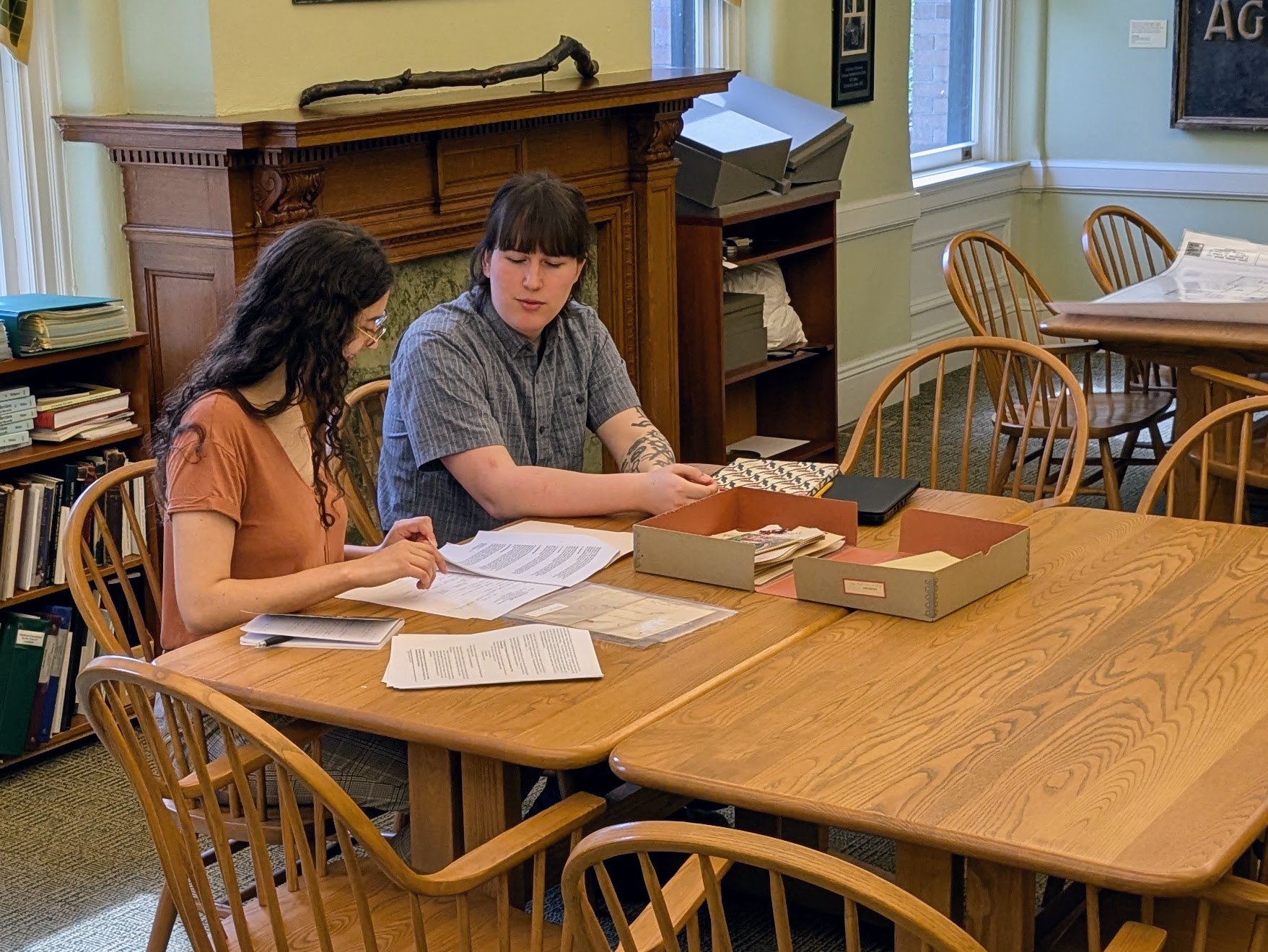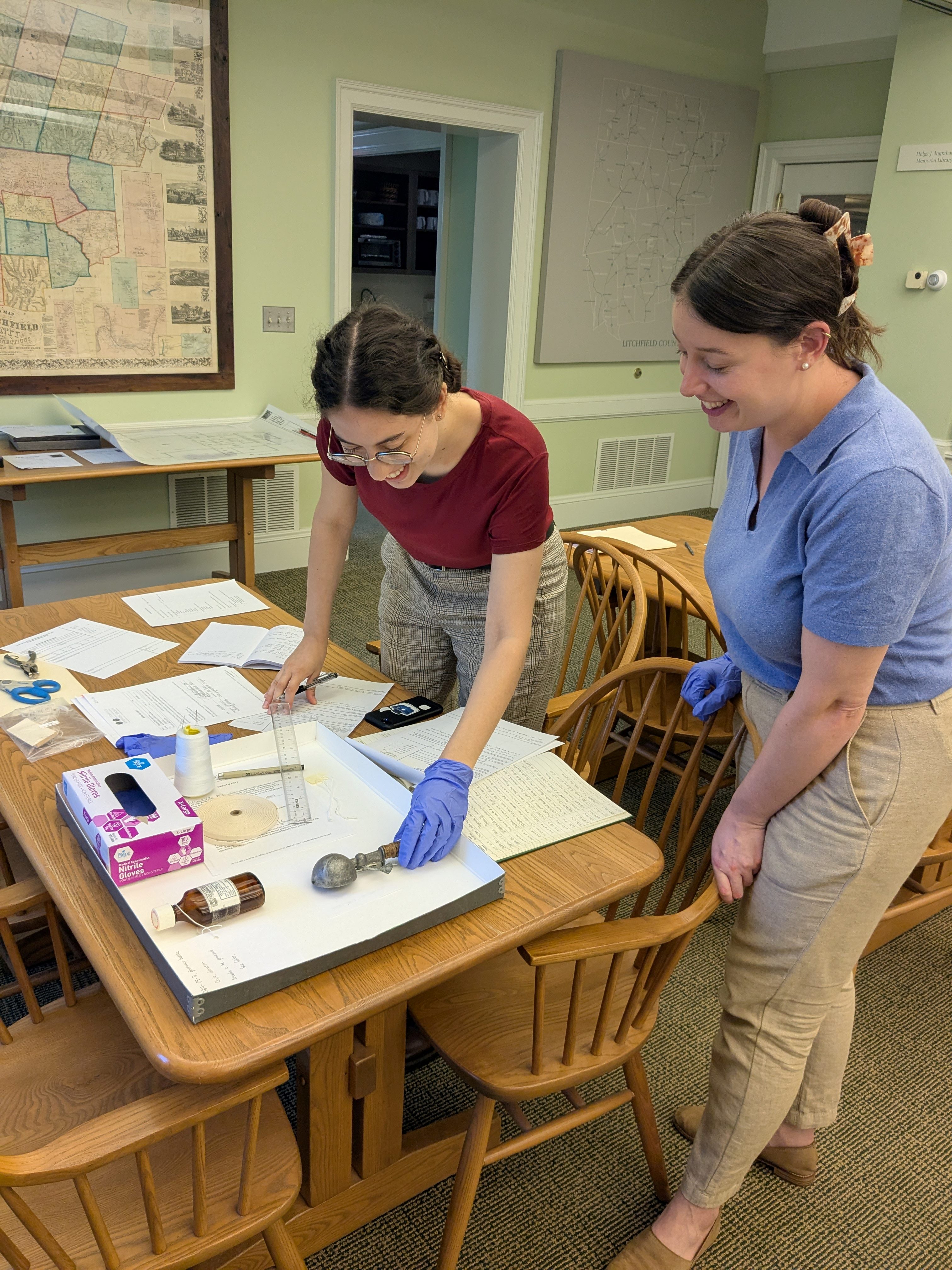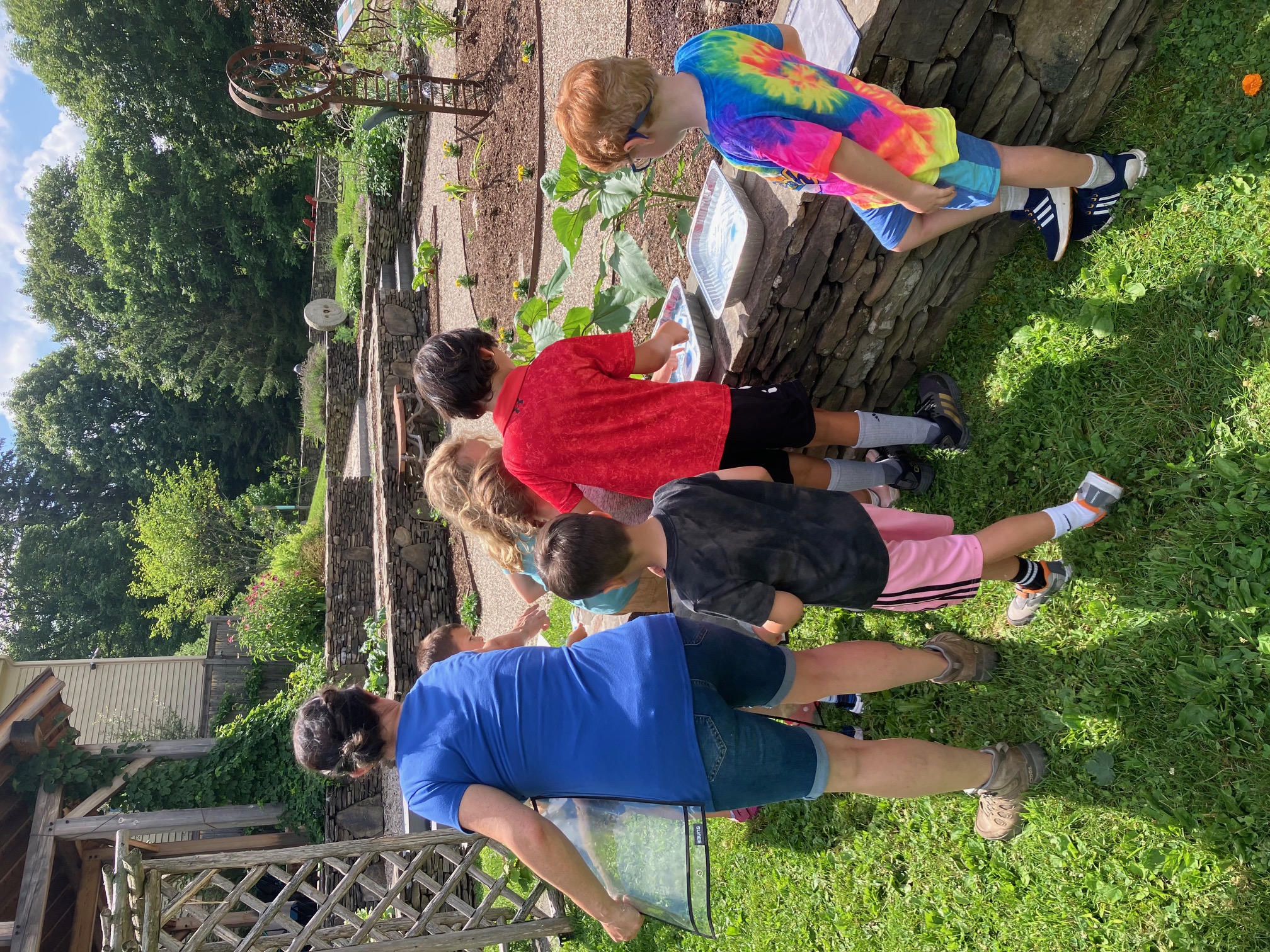By Cecelia Hooper, Intern
As an intern, one has to be somewhat of a jack-of-all-trades, even across different fields. The Litchfield Historical Society takes this to its fullest extent, having their intern train under all full-time staff during their stint at the LHS, rather than focusing on one specialty. When I applied and was selected to be the intern for the Litchfield Historical Society, I was excited for this opportunity to wear a variety of hats and learn about many different roles. Even partway through the internship, I feel that I’ve learned so much, both about how a museum operates and about myself, and what parts of it I prefer.
I started out the summer by assisting in the archives, LHS’s Helga J. Ingraham Memorial Library. Evan, the Archivist, set me to processing parts of the collection that had not yet been accessioned (assigned a number and a finding aid, then permanently housed). My first project was a set of letters that had been in the collection for over twenty years! Many small museums and historical societies run into struggles such as this, due to a lack of personnel and time. Making things even more difficult is the lack of context many of these backlogged materials have. Often, their provenance is listed as simply “found in collection”, as the staff that acquired these items have long moved on and their documentation is either lost or nonexistent. This lacking context can make interpretation much more difficult.

Ideally, each item and archival collection is accessioned and processed as soon as it is donated or acquired. This is less feasible with large backlogs of items and other pressing matters that need attention, a commonality of small museums and historical societies. This is where an intern can be extremely helpful—while the full-time staff attends to the necessary and pressing issues that come with the day-to-day running of a museum, the intern can complete essential tasks that sometimes fall by the wayside—such as accessioning and processing. I was thrilled to do this, as I found I quite liked learning about an item, then fitting it officially into the collection and making it findable.
Museums are made to educate and assist the public, and researchers often use their materials. They become much less helpful when those materials are not accessible, nor even listed as being held. This is why a finding aid is so essential, the last part of the process of accessioning and cataloging. It presents preliminary research and information, and ensures collections are digitally and publicly accessible. Often, these finding aids are relatively bare bones, due to time constraints, but with more popular or requested items the aid gains more depth.
The letters I processed were written by Andrew Kingsbury (1759-1837) to Litchfield resident Seth P. Beers (1781-1863) in 1826. Part of that same acquisition, but forming its own collection, was an 1821 Bill of Exceptions concerning Moses Seymour Jr. (1742-1826). For both objects, I looked them over to ensure they fit the Litchfield Historical Society’s mission, then assigned them an identifying number. I then researched their content and writers, assessed their condition, and input the information into our database. That information is now publicly available on ArchivesSpace. All of this was initially done with the supervision and guidance of Evan as I learned, then eventually independently.
I also worked on inventorying a much larger job: the donated records of Litchfield Public Schools, dating to the beginning of the twentieth century. This collection is still being processed, so is not yet publicly accessible with a finding aid. I looked through the collection, noting the different materials, their dates, and any preservation concerns. I also created a processing plan, one that outlined suggested series and subseries to categorize the collection into. Eventually, this collection will be fully cataloged and moved to its final home in archival boxes.
I worked with the Curator, Nicole, next. I learned how to accession and process objects, a very different beast to archival processing. Much of my time was spent working on our recent backlog, learning how to physically handle, label, and photograph the items. For each object, I filled out a paper catalog sheet that included a description of the object, its title, physical dimensions, and date of creation. The object was then labeled with its accession number (either a paper or fabric tag), photographed, and eventually housed in its permanent or temporary home. Finally, the information was added to CollectionSpace, along with its photographs. Often, it is much easier to do such things in batches—measure three items at once, then do all the photographing necessary, rather than going through the whole process for each item individually, needing to take out and put away equipment each time. This can be one reason for a backlog of items to build up.

Many of the items I dealt with while working with the collections were also from Litchfield Public Schools, companion donations to the records in the archives. A set of trophies and jerseys presented unique challenges while cataloging as they are currently on display in the Liggett Gallery. I had to wait for a day the museum was closed—Monday—to take them out of their cases, measure, photograph, and label them, all while in the Gallery.
While working with Nicole I also had the opportunity to observe a significant donation to the collection. Eric K. Hatch donated a portrait of his father, Eric S. Hatch, and I was able to accession, process, and catalog the item just a day after it had been dropped off. The portrait will hang in the Reading Room, so I had the opportunity to research and write a label for the painting.
More recently, I assisted with Inventors & Innovators: a STEM History Camp for children in kindergarten through the second grade. This was a new experience for me, as I rarely work with children, but was incredibly fun. The kids had so much energy and curiosity for the world that it was infectious. It was wonderful to see education, a necessary aspect of museums, be extended to people so young. [Photo of camp, maybe two side-by-side?]

To finish up the internship, I researched, wrote, and presented a program to the public. It was an informal lecture-discussion on the recently acquired portrait of Eric S. Hatch, covering both his life and the context of child portraits at the beginning of the twentieth century.
All this to say, my daily work at the Litchfield Historical Society could look incredibly different between weeks or even days. I could be entering data into a computer, handling historic objects, or supervising outside arts and crafts. Even with so much variation, unexpected activities can come up. I once spent the last hour of a workday copying archival material for a researcher, and on another day spent an afternoon in an unscheduled exhibit lighting tutorial with our Curator, as the lights in one of our galleries needed to be adjusted. Occasionally a staff member was out of work, so I needed to work around their absence. This kind of variety is one of the things that makes work at a museum so interesting, and so rewarding.
I have also had the opportunity to join the LHS’s staff meetings, collection plan discussions, and the Collection Committee meetings. All of them exemplify just how important communication, cooperation, and community are to a small museum. Each allowed me to learn more in depth how a museum is run: the kind of budgeting necessary, the community engagement and checks and balances within the system, and the kinds of long-term plans a museum might make for bettering their institution. I’ve learned an incredible amount, and each day allows me to add depth and breadth to that knowledge.